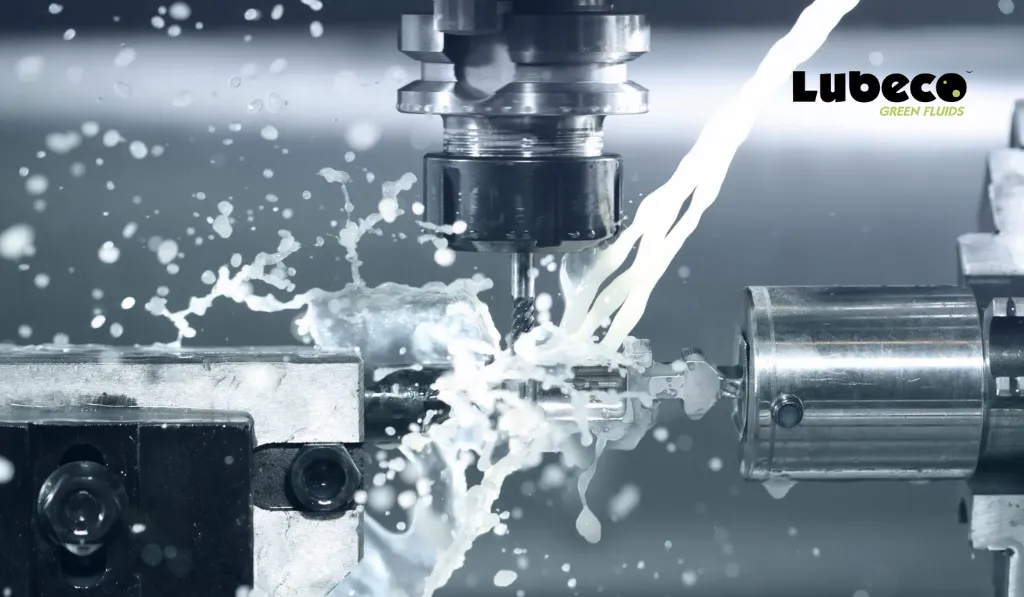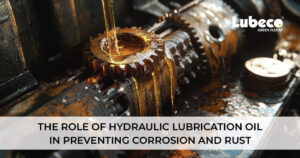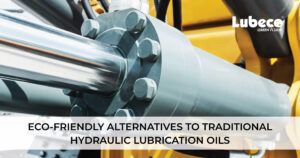Lets understand the science behind water-soluble metal cutting fluids, exploring their dual roles in cooling and lubrication. From understanding their fundamental properties to delving into mechanisms of action, selection criteria, and best practices, this blog is a guide to optimizing metal machining processes.
Introduction:
In the realm of machining and metalworking, the significance of cutting fluids cannot be overstated. These fluids play a pivotal role in enhancing the efficiency, precision, and longevity of metal cutting processes. Among the various types of cutting fluids, water-soluble metal cutting fluids stand out for their versatile applications and numerous benefits. In this comprehensive guide, we delve deep into the intricacies of water-soluble metal cutting fluids, exploring their cooling and lubricating properties, mechanisms of action, selection criteria, and best practices for optimal performance.
Understanding Water-Soluble Metal Cutting Fluids:
Water-soluble metal cutting fluids, as the name suggests, are formulations that can be mixed with water to form emulsions or solutions. These fluids typically consist of a blend of base oils, emulsifiers, corrosion inhibitors, lubricants, and additives. They are designed to provide cooling, lubrication, chip removal, and corrosion protection during metal cutting operations.
Cooling Properties:
One of the primary functions of water-soluble metal cutting fluids is to dissipate heat generated during cutting processes. As the cutting tool interacts with the workpiece, frictional forces generate significant heat, which can lead to thermal deformation of the workpiece and tool wear. Water-soluble cutting fluids act as heat transfer agents, absorbing and carrying away excess heat from the cutting zone. This cooling effect helps maintain stable temperatures, preventing overheating and thermal damage to the workpiece and tooling.
The cooling properties of water-soluble metal cutting fluids are influenced by several factors, including:
- Thermal conductivity:
The ability of the cutting fluid to conduct heat away from the cutting zone.
- Heat capacity:
The capacity of the fluid to absorb and store heat energy.
- Flow rate:
The rate at which the fluid is delivered to the cutting zone, affecting the efficiency of heat removal.
Lubricating Properties:
In addition to cooling, water-soluble metal cutting fluids also serve as lubricants, reducing friction and wear between the cutting tool and workpiece. Lubrication is crucial for minimizing tool wear, achieving smoother surface finishes, and prolonging tool life. The lubricating properties of cutting fluids are determined by factors such as viscosity, film-forming ability, and chemical interactions with metal surfaces.
Water-soluble cutting fluids form a thin film between the cutting tool and workpiece, reducing friction and preventing direct metal-to-metal contact. This lubricating film acts as a barrier, enhancing tool life and promoting superior surface finish quality. Additionally, lubricants in the cutting fluid formulation provide boundary lubrication, reducing wear and extending the lifespan of cutting tools.
Mechanisms of Action:
The effectiveness of water-soluble metal cutting fluids in cooling and lubrication stems from various mechanisms of action:
- Boundary lubrication:
Lubricants in the cutting fluid adhere to metal surfaces, forming a protective film that reduces friction and wear.
- Hydrodynamic lubrication:
Fluid film formation between the cutting tool and workpiece minimizes contact pressure and frictional forces.
- Cooling by evaporation:
Heat is absorbed and dissipated through the evaporation of water in the cutting fluid, cooling the cutting zone.
- Chip flushing:
Cutting fluids aid in the removal of chips and debris from the cutting zone, preventing chip recutting and tool damage.
Selection Criteria:
Choosing the right water-soluble metal cutting fluid is essential for achieving optimal performance and efficiency in machining operations. When selecting a cutting fluid, consider the following factors:
Material compatibility:
Ensure that the cutting fluid is compatible with the materials being machined to prevent corrosion or degradation.
Machining application:
Different machining processes (e.g., turning, milling, drilling) may require specific types of cutting fluids tailored to their unique requirements.
Environmental considerations:
Select cutting fluids with minimal environmental impact, such as bio-based or environmentally friendly formulations.
Performance requirements:
Evaluate factors such as cooling efficiency, lubrication effectiveness, tool life improvement, and surface finish quality.
Concentration and dilution ratios:
Follow manufacturer recommendations for proper fluid concentration and mixing ratios to optimize performance and longevity.
Best Practices:
To maximize the benefits of water-soluble metal cutting fluids, adhere to the following best practices:
- Maintain proper fluid concentration and replenish as needed to ensure consistent performance.
- Monitor fluid condition regularly through visual inspection, pH measurement, and microbial testing.
- Control fluid contamination by keeping machining equipment clean and free of debris.
- Implement effective fluid management practices, such as recycling and filtration, to extend fluid life and minimize waste.
- Provide adequate ventilation and personal protective equipment (PPE) to ensure safe handling of cutting fluids.
Conclusion:
Water-soluble metal cutting fluids play a crucial role in enhancing the efficiency, precision, and longevity of metal cutting processes. By understanding their cooling and lubricating properties, mechanisms of action, selection criteria, and best practices, manufacturers can optimize machining operations, improve tool life, and achieve superior surface finishes. With continued advancements in cutting fluid technology and responsible fluid management practices, the future of metal machining looks promising, with reduced environmental impact and enhanced productivity.










